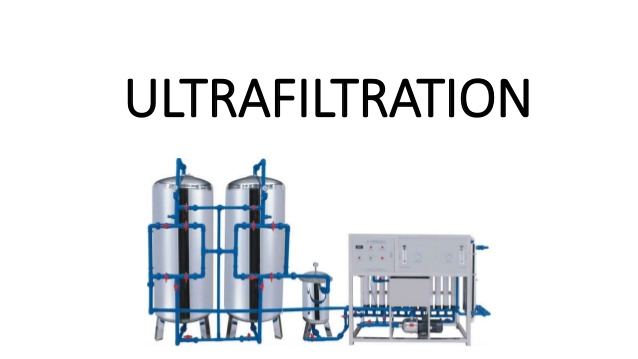Reverse osmosis systems and ultrafiltration systems are becoming more and more popular worldwide as best-practice industrial water treatment methods. These systems help make clean process water for industrial purposes, or help cleanse water that has been used for industrial purposes before it is released into the environment.
Reverse osmosis (RO) is a filtering method for purifying aqueous solutions by removing the most common contaminants from them using a special membrane filter. This kind of filtration system consists of three main elements: the water source (a tap, river, well…), a pretreatment system, and an RO unit.
How does reverse osmosis (RO) filtration work?
Reverse Osmosis (RO) is a filtering process that uses pressurized water to push the contaminants through the membrane. The RO membrane acts like a filter; allowing pure water molecules to pass through it while trapping contaminants. Here is how the RO filtration works:
Step 1 – Feed water is pumped under high pressure (from a storage tank or faucet) and passes through a carbon pre-filter and sediment filter, via the input of the system. This step helps to remove sediments and other larger particles from the water.
Step 2 – Next, the sediment filter is cleaned by sending a small amount of permeate (RO treated water) back into it to flush out trapped contaminants. The majority of feed water then continues through an RO membrane, which removes excess ions and molecules that produce unpleasant tastes and odors from the water.
Step 3 – The last step is to pass the water through a post-filter that removes any remaining particles and sends them down the drain. Then permeate (RO treated water) and rejected contaminants (reject, concentrate) flow separately back into the system where they are directed to additional storage tanks depending on their quality. Rejected contaminants are usually used for irrigation or other purposes.
An RO unit works on the principle of osmosis which is defined as water passing through a membrane, while pure water molecules are bonded together by high chemical attraction to form what scientists call “tight junctions” between each and every water molecules. This creates the pressure necessary to push contaminants through the membrane.
Using water pressure instead of a pump for this process is what makes Reverse Osmosis systems so reliable and efficient at removing contaminants from the water while producing the lowest possible environmental impact over time. Water travels through the system using gravity, not electricity or energy! The only power that’s used is to run a small pump just to flush the sediment filter every so often.
How do Ultrafiltration Systems work?
Ultrafiltration system is quite different from other filtering technologies because this system uses the pressure of water to force contaminants through a fine membrane, leaving us with pure water on one side and even cleaner water on the other. If you are still not sure how this amazing process works, here is a simple explanation of the Ultrafiltration steps:
Step 1 – First, water enters the tank, and then it runs through a pre-filter that removes sediments that cause bad taste and odors before the water gets to the membrane.
Then water enters into the tank, and then it runs through a pre-filter that removes sediments that cause bad taste and odors before the water gets to the membrane.
Step 2 – Then, after leaving the tank, water goes onto the TFC membrane where it passes while pure water molecules are bonded together by high chemical attraction to form “tight junctions” between each and every water molecule. This creates the pressure necessary to push contaminants through the membrane.
Step 3 – Next, clean water goes through another carbon filter and is stored in a storage tank for use. At this point, it has been removed from the system (flushed) and is ready to be used. Rejected wastewater (reject) leaves the system via drains at this stage, while concentrated waters remaining
For More Details Check Culligan Industrial Water
